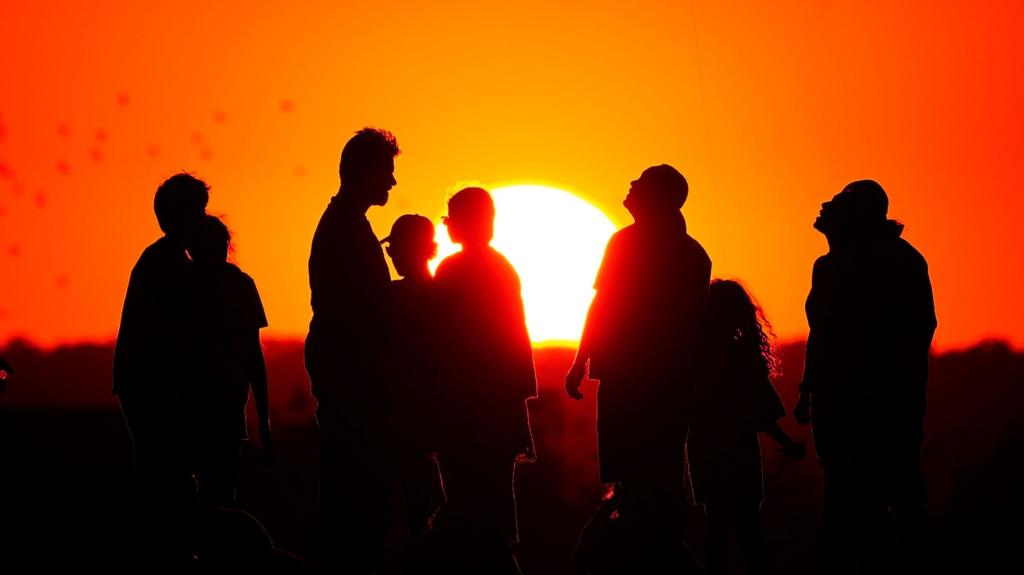Provisional data from the Met Office indicates that the United Kingdom has “almost certainly” experienced its hottest summer on record.
The mean temperature across the nation, encompassing both daytime highs and overnight lows, currently registers at 16.13C (61.03F) with less than a week remaining in the season.
This figure significantly surpasses the previous record set in 2018, which had a mean temperature of 15.76C (60.37F).
To prevent this record from being broken, temperatures for the remainder of August would need to be four degrees below the seasonal average, a scenario deemed highly improbable.
This trend aligns with mounting evidence suggesting that summers are becoming hotter and drier as a consequence of climate change.
The summer’s highest temperature was recorded at Faversham, Kent on 1 July, reaching 35.8C (96.4F).
While this may appear modest in comparison to the extreme highs of previous years, including the record-breaking 40.3C (104.5F) registered in July 2022, the defining characteristic of this summer has been the sustained and widespread nature of the heat.
Notably, heatwave criteria were met on four separate occasions throughout the season.
The heatwave conditions commenced early, with highs exceeding 33C (91F) during the June heatwave that coincided with the summer solstice.
Temperatures then escalated later in the month, resulting in Wimbledon experiencing its hottest tournament start on record.
Following a brief cooling period in early July, a third heatwave brought the hottest weather of the year to Scotland, Northern Ireland, and Wales.
A fourth heatwave in August saw temperatures reach 33.4C (92.1F) in parts of England, while Charterhall, Borders, recorded 31.6C (88.9F), Scotland’s highest August temperature since 2003.
The warm conditions have frequently been accompanied by clear skies and above-average sunshine, particularly in England.
Met Office data reveals that the UK has received 72% of its average summer rainfall to date.
Typically, this figure would be at 93% by this point in August.
However, the rainfall distribution has been uneven.
Central, eastern, and southern regions of England have experienced exceptional dryness, while northern and western areas of the UK, particularly Scotland, have been significantly wetter.
Hosepipe bans are currently in effect across large swathes of England, partly due to the combination of a dry, hot summer and the UK’s driest spring in over 50 years.
The prolonged dry spell has resulted in exceptionally low water levels at Rutland Water.
The situation has not been without its complexities, however.
Heavy downpours and thunderstorms led to flash flooding in certain areas during July.
Additionally, the start of August was marked by stormy conditions as Storm Floris brought gusts exceeding 80mph (130km/h) to parts of the UK.
This storm was unusually powerful for the time of year and caused widespread disruption, particularly in Scotland.
Several factors have contributed to the exceptional warmth of this summer.
The frequent presence of high pressure systems has resulted in extended periods of dry, calm, and sunny weather.
The dry ground conditions have also facilitated temperature increases.
Less of the Sun’s energy has been used for evaporation, leaving a greater proportion to heat the ground and the air.
Furthermore, a marine heatwave has played a role, with sea temperatures in some UK regions reaching up to 3C above normal at times, thereby reducing the usual coastal cooling effect.
Scientists emphasize that climate change is driving the trend towards hotter and drier summers.
Nine of the last 10 summers (2016-2025) have recorded temperatures exceeding the long-term average.
The number of very hot days with temperatures surpassing 30C (86F) has more than tripled in the most recent decade compared to the 1961-1990 average.
This year’s heat is poised to displace the infamous summer of 1976 from the UK’s five warmest on record, meaning that the five hottest summers will all have occurred since the year 2000.
The Met Office is expected to release the complete summer statistics on 1 September.
Has the British summer changed beyond recognition?
As UK faces third heatwave, is this ‘just summer’?
Why are cities often the hottest spots in the country?
Comments can not be loaded
To load Comments you need to enable JavaScript in your browser

